Dressage Moves in Red Dead Redemption II and their Real Life Equivalents
Here at The Mane Quest, I got pretty damn excited when press information in September started to promise that Red Dead Redemption 2 would include “Dressage” moves if you bonded enough with your horse.
I am a dressage rider after all, albeit a somewhat amateur one, and no AAA game that I know of has ever tackled anything remotely like realistic dressage before. That excitement was mixed with a bit of skepticism at the fact that Dressage and Western riding (as it is shown in Red Dead) are usually two entirely different riding styles, and the lack of concrete information about what “dressage” in the game would really entail.
So now that the game is out and I’m at least a few hours and several levels of horse bonding into it, let’s have a look at which dressage moves you can perform in Red Dead Redemption II, how you execute said moves, and how they look in real life.
Horse Bonding
Horse Bonding advantages from the in-game help
Once you start riding a new horse in Red Dead Redemption, you start bonding with it. The bonding stat develops slowly by riding or leading your horse and is sped up if you pet it while riding by pressing L3 and when you pat the animal using L2 and Square when you stand next to it.
Reaching a new level of Horse Bonding unlocks the aforementioned “dressage moves”.
Of course, in real life, teaching a horse (or any animal for that matter) specific moves is a matter of practicing them with a lot of positive reinforcement, not one of petting them enough. But in a game like Red Dead Redemption 2, where these unlocking these moves are intended as positive reinforcement for the player to reward them for treating their horse kindly, I won’t complain about this simplification.
I will also add that even with a well trained horse, executing an advanced dressage lesson well is a more complex movement on the rider’s part than pressing a button, but that too is a very understandable change.
Rearing
The first special move you unlock with your horse is rearing on command, which is a bit ironic, since it’s probably both the most useless of the extra moves and the one that requires the most training in real life.
Real horses can be taught to rear: It is a process that starts with the smallest hops and takes a while to learn, and from what I gather, it is not a trick you’d ever want to teach a horse that is not otherwise completely stable, because you don’t want to risk the horse starting to rear in situations where you’re not explicitly asking for it. As with many horse-related things, you can harm your horse (or yourself) if you do it wrong.
Giving input to rear is followed by some gorgeous hopping and stamping around by the horse on its own.
You would likely start practicing the exercise on foot, without the weight of a rider on the horse’s back.
In Haute École (“High School”) dressage, the closest equivalent to what we refer to as “rearing” would be a “pesade”. It’s an important distinction that the “pesade” (where the horse rises to an angle of about 45°) as well as the “levade” (where the horse only rises to about 30°), are very controlled, collected motions that require the horse’s balance and concentration. These are very advanced lessons that cannot be taught to every horse, and they look very different from a spontaneous rearing out of fear or when the horse is playing.
The Wikipedia page on Rearing has a few more interesting distinctions and descriptions and this article in German has a bunch of nicely labelled pictures of the mentioned High School maneuvers.
It’s unlikely that the average cowboy (or outlaw) around 1900 would have had any use for a horse that could rear on command. I suppose Red Dead Redemption 2 made rearing the first available move precisely because it is utterly useless for anything else than looking cool on screenshots. And let’s be real, it does look pretty damn cool.
Arthur’s position while rearing does not look very balanced to me. A real horse would be in danger of falling over like this.
In the game, you perform the “Rearing” maneuver by holding R1 and tapping Square on PS4 or holding RB and tapping X on Xbox One, while the horse is stationary.
The resulting motion is is not as neatly collected as a pesade, but looks more like what a stunt horse or circus horse might show.
A very nice touch is that commanding your horse to rear has an effect on its mood. After rearing, the horse lifts its feet again on its own, even as far as doing a few more low hops without further input. Rearing makes your horse twitchy and leaves it prancing, with wonderfully detailed animations.
Backing up in the game is possible by holding R1 while standing. I think. It just kind of happened.
Sliding Stop to Back Up. (Source) Backing up at such a high speed is unique to Western Reining as far as I know, the exercise is performed much slower in English Dressage.
Skid Stops & Skid Turns
These are two movements unlocked in one, and they come from the Western Riding discipline of Reining, not from classical Dressage. This makes them much more accurate for the setting and time period. Western riding has its origins in ranching: A good stock horse (i.e. one used to herd livestock like cattle) had to be able to stop, turn and run fast in order to be efficient. Modern Reining competitions do not involve any livestock (unlike other Western disciplines), but showcases exact movements and good posture on the horse’s part.
As far as I can tell, Western riders do not call any movement “skid stop” or “skid turn” though: The correct term for the former would be Sliding Stop and the closest real life equivalent to the latter would be a Rollback.
The Sliding Stop ingame looks pretty flawless if you ask me.
The Sliding Stop as performed at a Reining competition (Source)
A Sliding Stop is performed at a full gallop, and it’s important that the horse is well collected for it, meaning that its hind legs carry weight and come well underneath its body. The Rollback is a possible continuation of the Sliding Stop, where the horse only stands still for a brief moment and then performs a quick 180° turn and continues at a gallop.
Rollback in Western Reining (Source)
The absurdity of the “Skid Turn” maneuver is more visible when using the game’s cinematic camera. The horse slides impossibly far.
The ingame “skid turn” is an odd sort of combination of a Sliding Stop and a Rollback that is not performed as such in real life, as far as I can find. In it, the horse’s hindquarters actually slide around the front legs in what looks like too fluid a motion for it to be possible even on soft riding arena sand, let alone on the wild prairie.
In Red Dead Redemption 2, you perform a sliding stop by holding R1 + X, respectively RB + A while moving. For the skid turn, you do the same, but add directional input with the left stick.
Drifting
The last two movements you can unlock in the game are called “Piaffe” and “Drifting”. The name of the latter is obviously an attempt at making the motion sound either cool or understandable (or both) to the average gamer who is likely more familiar with the movement of a car than that of a horse.
What the game calls drifting is actually a (comparatively) basic dressage exercise called “leg yielding”: The horse moves forward-sideways, the horse’s body is slightly bent lengthways away from the direction it moves in.
Leg yielding at a walk. The horse is bent away from the direction of movement.
Leg yielding at a walk in classical dressage. (Source)
The leg yielding animation looks fantastic. The horse is bent a bit more than it has to be - as a rider that would be my cue for more active outside leg and rein aids, and the motion doesn’t go forward enough for how far sideways it goes, but that’s rather advanced as far as video game dressage critique is concerned. Both are not per se unrealistic, they are mistakes I have made in real life plenty of times while learning to leg yield.
The leg yield in the game can be performed at a walk, trot or canter, and the first two look truly excellent.
The canter drifting is more of a sideways hopping rather than a true-to-form leg yielding.
“Sideways canter” or half-pass in dressage. (Source)
The canter “drifting” doesn’t really look like something any dressage exercise I know.
I noticed that I had to switch the horse controls setting from “camera relative” to “horse relative” in order to execute a half-decent leg yield at any gait. With the default controls, the horse tends to drift around on a rough circle, instead of going forward-sideways on a straight line.
A piaffe on the other hand is an extremely collected trot in place, with little or no forward movement. While the game presents the piaffe as the basis for drifting, the piaffe is actually a much more advanced maneuver and has little to do with lateral movements. The piaffe animation in-game looks choppy compared to how fluent the movement looks (or should look) when well executed in real life. The game horse is not collected, i.e. its hindquarters are not engaged.
The horse piaffing while Arthur does nothing at all, forever reaffirming the misconception that horse riding is not exerting at all because the horse does all the work anyway.
Piaffe performed by a dressage rider. (Source)
What is noticeably off here in the game’s version is the rider’s seat and position. Arthur chills and jiggles around while the horse piaffes on its own. In reality, the motion would demand attention, muscle and balance from both horse and rider.
Piaffe and Leg Yield are performed in the Red Dead Redemption II by holding Square (PS4) or X (XOne) with or without directional input.
In Conclusion
Red Dead Redemption 2 gets a few details wrong about its dressage, but all in all the movements are fairly realistic as far as the horse’s actual movement is concerned.
Red Dead is not and never promised to be a dressage simulator, and still these neat little tricks are probably the closest any well-made AAA video game has ever come to even acknowledging that such advanced equestrian techniques even exist.
Red Dead Redemption II was released for PlayStation 4 and XBox One on October 26th 2018.

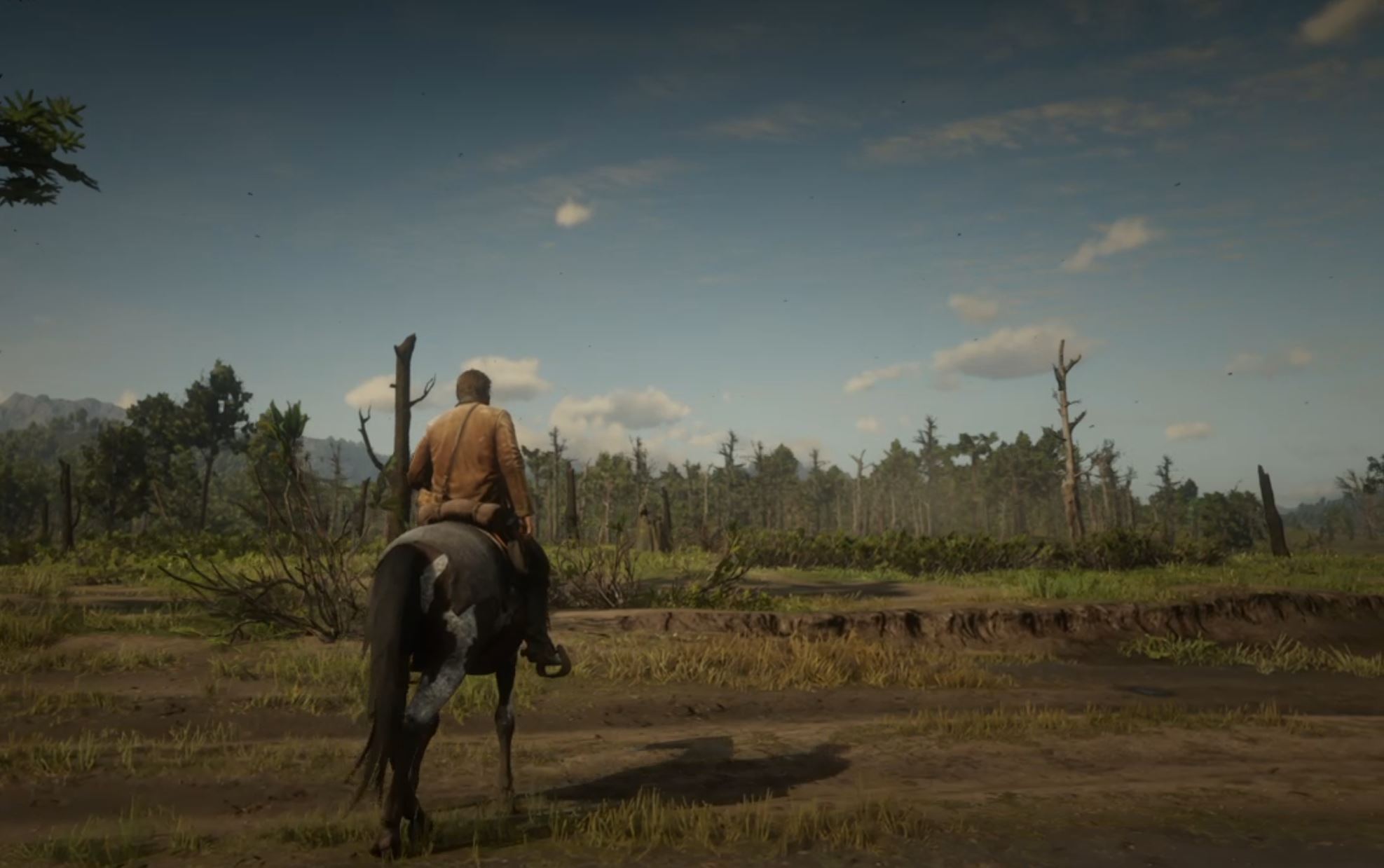

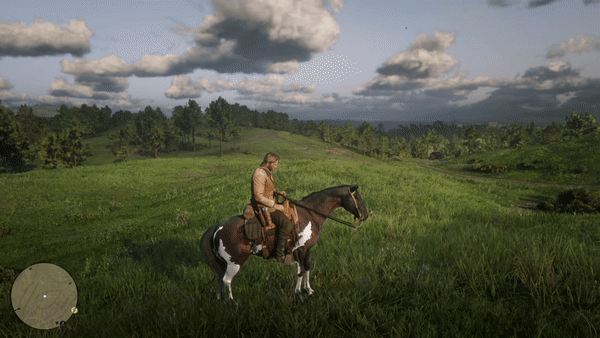
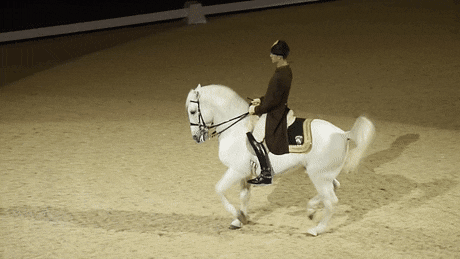
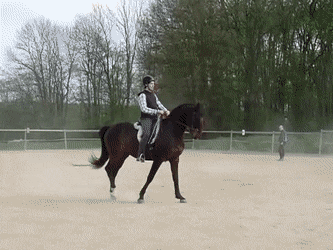

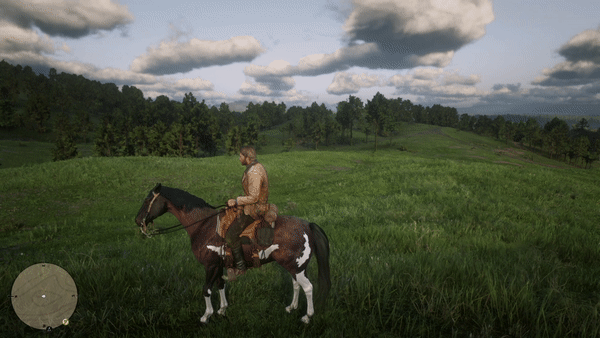


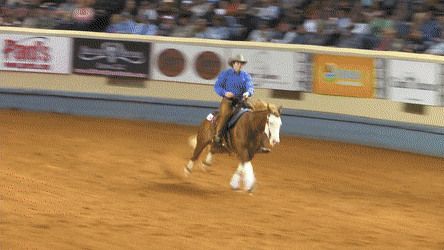
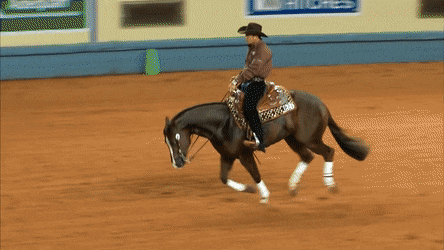
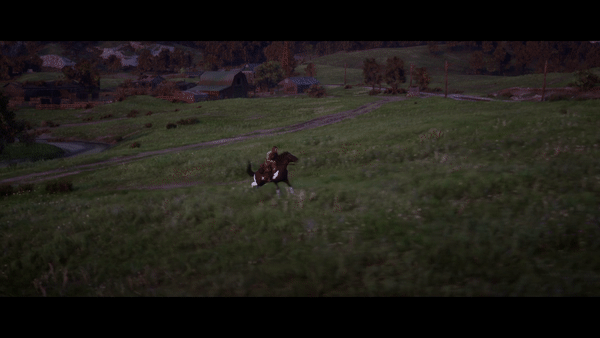
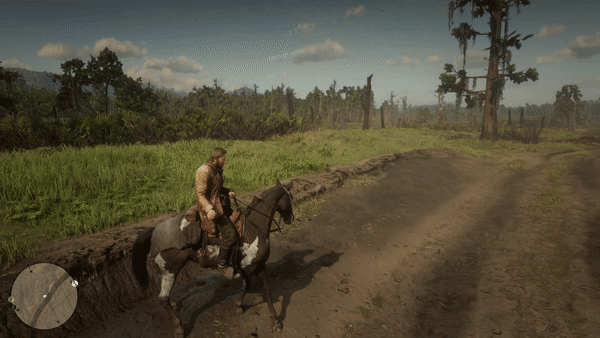

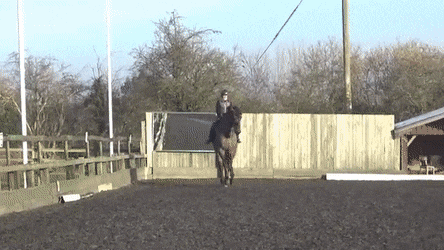
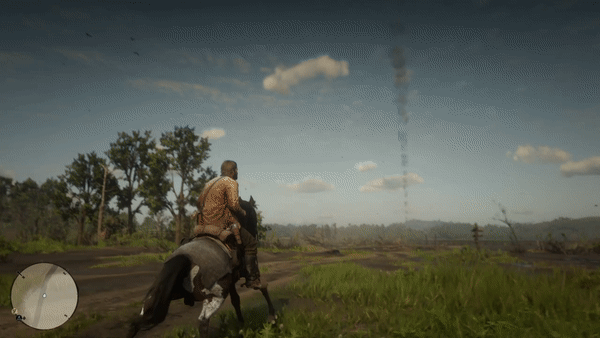
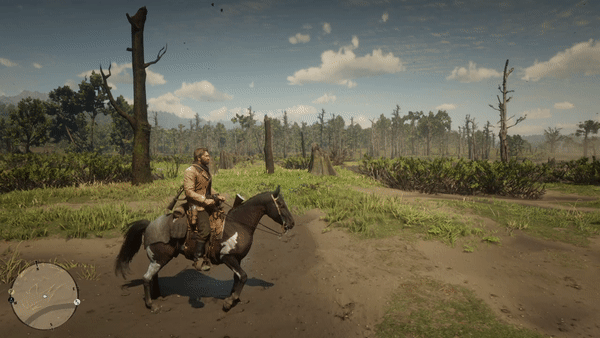




Moon Channel, a YouTube creator of gaming video essays, has released a fantastic video tackling the history and market of so-called “girl games” – video games deliberately marketed to and targeted at young female players.